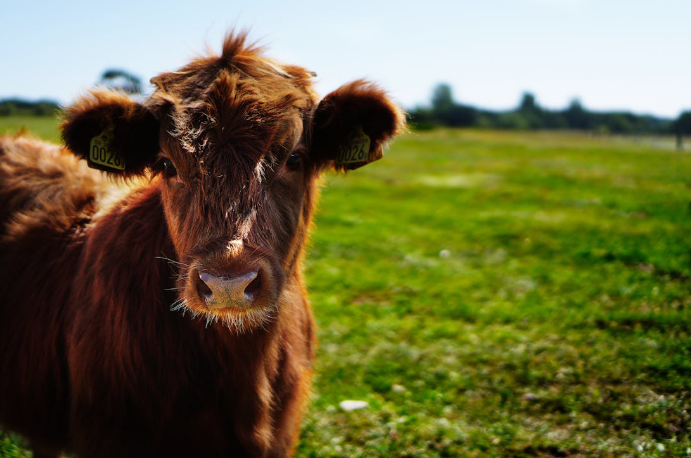Jessica Holdman South Carolina Daily Gazette
When Platt Moore and his wife Ashley learned a residential developer had approached a neighboring farm owner about selling their land just outside the fast-growing town of Fountain Inn, the Moores worried what it would mean for their own small ranch to go from prime pastureland to a 400-home subdivision next door.
It seemed to them like the once rural towns on the outskirts of Greenville were raising more houses than beef cattle in the five years they’d been operating, so the couple asked the landowner to sell the roughly 200 acres to them instead.
They turned to a decades-old state grant program aimed at preserving archeological and natural resources in the state.
While perhaps better known for its protection of undeveloped forests, wetlands and historical properties, South Carolina’s Conservation Bank can and has preserved farmland. The agency has safeguarded upwards of 39,000 agricultural acres since it was established 23 years ago, according to budget and program analyst Adair Roark.
But in the last couple years, farmers have been considering it with greater frequency as the cost of farming has risen and development, driven by a growing population, has moved in.
South Carolina has lost about 1,900 farms over the past two decades, according to the latest U.S. Department of Agriculture data.
Forestry and farmland lost to development from 2001 to 2016 totaled more than 280,000 acres, according to a 2022 report by American Farmland Trust titled “Farms Under Threat,” which gave South Carolina the nation’s eighth-worst threat ranking.
‘Exceeded expectations’
These trends prompted the South Carolina Farm Bureau to form a working agriculture focused land trust, which leverages federal, state and local tax credits and dollars to pay farmers to put their land into protective easements, said Executive Director Gary Spires. Under the agreements, the farmers retain ownership of the land and can continue to farm but must limit all future use to agriculture.
In the past two years, the SC Farm Bureau Land Trust has closed on 24 easements statewide, awarding upwards of $9 million for the preservation of 7,400 acres. The organization has four more easements nearing completion and another 20 in consideration, Spires said.
“When we went into this, we started it from scratch,” he said. “It has exceeded expectations.”
In addition, the General Assembly passed legislation to form the Working Farmland Protection Fund, which Gov. Henry McMaster signed into law in March 2024.
The fund, which sits within the state Conservation Bank, sets aside additional money specifically to preserve agricultural land. Legislators put $12 million — $4 million annually plus $8 million in one time funds — in the current budget for the program. That’s up from $3 million in the previous year’s budget year.
To qualify, a landowner must generate at least 50% of their income from agriculture. The land also must be under threat of development, have value as a natural resource, and be located in or selling agriculture to poor, rural and minority communities.

In the last budget cycle, the program funded five easements covering about 1,770 acres across six counties. And the bank had more eligible applicants than it had available funds, said Executive Director Raleigh West. In those cases, the bank’s governing board still has the option to pull from general Conservation Bank funds.
Now, the more than 2,000-acre Lone Star Plantation near St. Matthews is in line to be the sixth to fall under the program, according to documents filed with a legislative financial oversight panel. The Conservation Bank plans to offer Larry Doyle and his family a $2 million easement.
Part of a former hunting preserve, the Doyles use a majority of the property to grow corn, soybeans, cotton and peanuts. The remainder is timber land and wildlife habitat, including 93 acres of ponds, wetlands and creeks that flow into the Congaree River and attract waterfowl, bobwhites and white-tailed deer.
Doyle retired from the Farm Credit industry four years ago and began farming full time.
“Had we not had this (Working Farmland Protection Fund) we probably could not have done this deal,” said Michael McShane, chairman of the Conservation Bank Board.
These are properties that could easily be turned into a field full of solar panels or an Amazon distribution center, McShane added.
“It would be a real loss to our state to see these lands converted over to other uses like that,” he said.
‘Able to make a living’
Spires thinks that farmers’ familiarity with the state Farm Bureau has led more people who hadn’t considered an easement before to look into it. That includes the Moores, who are in line for $1.5 million easement.
Platt Moore had experience with a conservation easement on a piece of hunting property he co-owned near the Congaree swamp, which he said came with a lot of restrictions. So when his real estate agent mentioned an agriculture easement, he was apprehensive at first.
But in working with farmers, the program allows them to carve out parts of their property in case they need it for a barn, grain bin, shop or other use in the future. That was important to the Moores, who said they may eventually add a horseback riding program or other ag-related tourism to their existing grass-fed beef and butchering operations.
Between bad weather and trade policy with China, farmers and ranchers face tight margins, Spires said.
“The last two growing seasons prices started tumbling while costs skyrocketed,” he said. “Now the tariff situation is making things even worse.”
“These are often multi-generational properties and people who want to farm but they have got to be able to make a living,” Spires added.
Tax deductions that conservation easements bring are important, he said, but even more so is the cash associated with these deals. Those who participate often pour that money back into their businesses.
‘Tougher every day’
Moore grew up on a 1,500 acre farm in Williamsburg County. He said back when he turned 17 he left the farm to go work in the environmental industry with no plans to return to agriculture.
Now, at age 58, he wants his four children to be able to grow up in a rural setting, prompting him and his wife to buy their small farm in the Upstate.
Moore thinks the conservation easement program is a good option for anyone in agriculture theses days and has started recommending it to his neighbors.
“Land prices are so expensive these days,” he said. “The barriers to entry are getting tougher every day.”
The family the Moores acquired their additional acres from had long moved away and leased it to a man who used it to graze cattle. Knowing they wouldn’t return to farming themselves, the family chose to sell so they’d have money to pass own to their own children and grandchildren.
The man who had been leasing the land was able to combine his herd with that of his son, who has a large cattle ranch in the Upstate.
“And we were able to expand our operations,” Moore said.
Not only do to Moores support themselves through raising cattle, they also own multiple retail stores that support 70 other local vendors, who sell items including free range chicken, pork, elderberry jam and honey.
Now, even if they end up surrounded by neighborhoods, 420 acres of the Moores’ property will remain farmland in perpetuity.
“It’s a win for us and a win for conservation at the same time,” Moore said.
Sign up for our Sunday Spectator. Delivered to your inbox every Sunday, with all the news from the week.

















